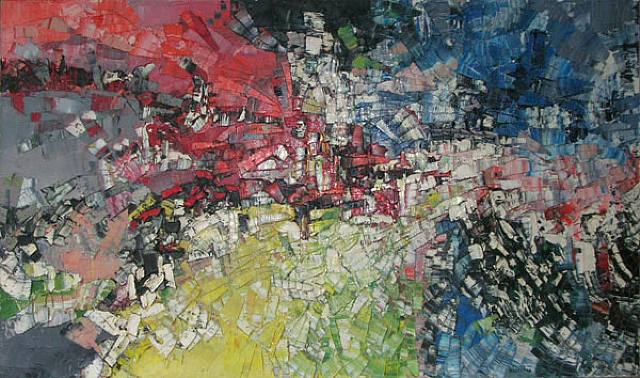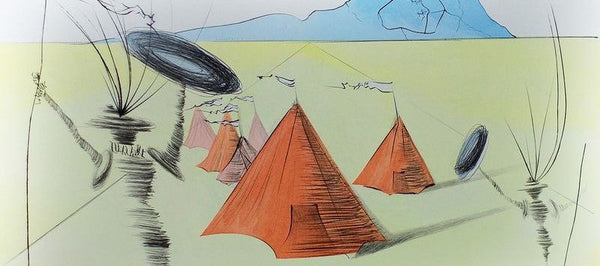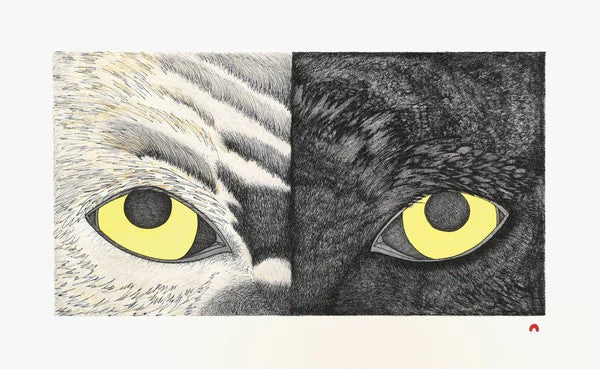This blog article was inspired by the recent exhibition of Jean-Paul Riopelle’s works I went to visit at the Vancouver Art Gallery. For many Canadians, Riopelle is a lesser known artist than many others, e.g. Group of Seven, even though he is much more recognized world-wide. This is why this exhibition - Riopelle: Crossroads in Time - is so important.
The Roots of Surrealism: A Revolution in Art
Automatism - of which Riopelle was a leading figure - was a radical act of liberation. As Pablo Picasso famously said, “It took me four years to paint like Raphael, but a lifetime to paint like a child.” For surrealists, this meant shedding learned conventions and painting with the uninhibited freedom of a child. Picasso admired Joan Miró’s work for exactly this quality, noting, “Miró’s paintings have the freshness of a child’s vision, but with the wisdom of an artist who knows the world.” Miró’s playful, organic shapes and vibrant colours embodied this ideal, and it was in this fertile surrealist ground that Riopelle’s art took root.

Joan Miró, Characters in the Night Guided by the Phosphorescent Tracks of Snails
The Roots of Surrealism: A Revolution in Art
To understand Riopelle, we must first look to the early 20th century, when World War I.’s devastation shook artists’ faith in rationality and tradition. Influenced by Sigmund Freud’s theories of the unconscious, surrealists like André Breton sought to free art from intellectual constraints, tapping into the raw, unfiltered depths of the psyche. The aim was to open a channel for subconscious expression, treating it as equal to conscious awareness. Salvador Dalí, epitome of Surrealism, with his fantastical imagery and meticulous precision, pushed this exploration into dreamlike realms, blending the bizarre with the real.

Salvador Dalí, Geopoliticus Child Watching the Birth of the New Man
This built on the Impressionists’ many decades earlier rebellion against the rigid rules of the Salon, where artists like Monet painted their subjective perceptions with loose, vibrant brushstrokes. Some Surrealists took this further with automatism, a technique where artists let their hands move instinctively, bypassing conscious thought to create spontaneous, unfiltered expressions.
Riopelle’s Early Years: From Quebec to Paris
Born in Montreal in 1923, Jean-Paul Riopelle grew up surrounded by the cultural and natural landscapes of Quebec. His early exposure to native art left a lasting mark. These influences gave his work a grounded, almost elemental quality that set him apart from his European peers. Yet, like many ambitious artists of his time, Riopelle was drawn to Paris, then the epicenter of the art world. There, he encountered a vibrant scene where Picasso, Dalí, Matisse, Chagall, and Miró along with other artists were pushing boundaries, fueled by surrealist ideas. Paris was a crucible of creativity, and Riopelle dove in headfirst.
In the 1940s, Riopelle joined the Automatistes, a group of Quebec artists led by Paul-Émile Borduas. Inspired by surrealism, they embraced automatism as a way to bypass conscious control and tap into spontaneous expression. Riopelle’s early works from this period are marked by expressive forms and a sense of unrestrained energy. But it was in Paris, where he moved in 1947, that his style fully blossomed. Surrounded by surrealist luminaries, he absorbed their techniques while forging his own path. Unlike Dalí’s meticulous, dreamlike precision, Riopelle’s work echoed Miró’s childlike spontaneity, but with a rugged, tactile intensity that spoke to his Canadian roots.
The Art of Spontaneity: Riopelle’s Signature Style
Riopelle’s paintings are a whirlwind of colour and texture, created with a technique that became his hallmark: the palette knife. Instead of brushes, he applied paint directly to the surface of the canvas using a palette knife in thick layers. On some occasions he pushed the paint on the canvas directly from the tube. This approach was deeply tied to automatism, allowing him to work quickly and instinctively, letting the canvas capture the raw energy of the moment. His large-scale works, like Pavane (1954) is chaotic yet harmonious, with intricate patterns that evoke both the natural world and the subconscious mind.

Jean Paul Riopelle, Pavane – oil on canvas, triptych, 1954
 Detail of Pavane by Jean Paul Riopelle – National Gallery of Canada
Detail of Pavane by Jean Paul Riopelle – National Gallery of Canada
A Master’s Ripple Effect
Being a master isn’t about universal adoration or commercial success (though Riopelle enjoyed both during his lifetime). It’s about creating a ripple effect that reshapes the art world. Riopelle’s influence is evident in the generations of artists who followed him, particularly in Canada. Internationally, his work found echoes in the gestural abstraction of figures of the Abstract Expressionists, like Willem de Kooning and Franz Kline, or like the dripping technique of Jackson Pollock sharing the passion for spontaneous techniques.
Beyond his paintings, Riopelle’s adventurous spirit influenced other mediums. He experimented with sculpture, printmaking, and even ceramics, always pushing the boundaries of what art could be. His collaborations with writers and poets, such as Samuel Beckett, further expanded his impact, creating dialogues between visual art and literature. Like a pebble dropped in a pond, Riopelle’s work sent waves through the art world, inspiring countless others to take risks, embrace spontaneity, and look within.
 Jean Paul Riopelle, Horizons ouverts, 1956
Jean Paul Riopelle, Horizons ouverts, 1956
The Man behind the Canvas
Riopelle’s personality was as dynamic as his paintings. Known for his larger-than-life personality, he lived with the same intensity he brought to his art. His time in Paris placed him at the heart of a bohemian world, where he formed close friendships with artists like Miró and the American painter Joan Mitchell, with whom he had a long and tumultuous relationship. Yet he never fully abandoned his Canadian roots, returning frequently to Quebec and drawing inspiration from its landscapes and Indigenous heritage. Later in life, he settled in the Laurentian Mountains, where he continued to create until his death in 2002.
 Jean Paul Riopelle, Untitled Composition, 1951
Jean Paul Riopelle, Untitled Composition, 1951
Experience Riopelle at the Vancouver Art Gallery
Jean-Paul Riopelle’s work remains as vibrant and relevant today as it was in the mid-20th century, a reminder that true mastery lies in the ability to inspire, challenge, and transform.
For those eager to experience his genius firsthand, the Vancouver Art Gallery’s exhibition, running from March 21 to September 1, 2025, offers a rare opportunity. Don’t miss the chance to immerse yourself in the swirling colours and untamed energy of a true Canadian surrealist master.

Jean Paul Riopelle, Chicago II, 1958, oil on canvas
Many works of Surrealist Masters are featured in the Chali-Rosso Gallery. Take a “cyber-walk” on our web site or (even better) come to the gallery and see these exceptional art works in real-life.



